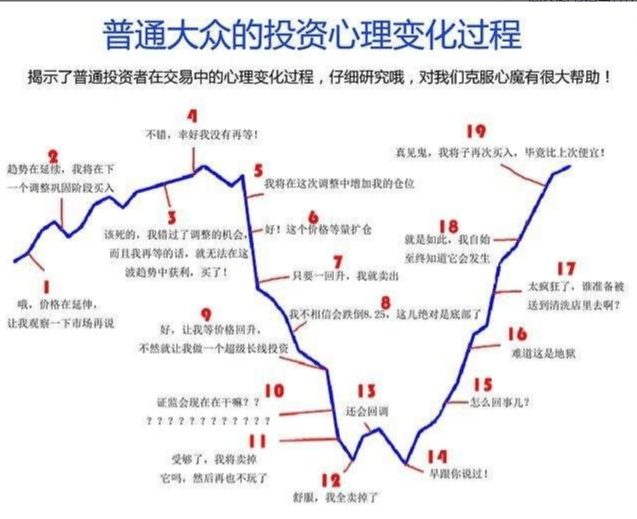Here's a hard truth: those in the crypto world who truly achieve financial freedom through Bitcoin are already financially free themselves. A friend of mine bought 10 BTC at 10,000 USD each, spending 100,000 USD. Then they forgot about it. When it reached over 1 million, they didn’t sell. Later, when they remembered, it had shrunk to over 500,000, but they still haven't sold. Why? Because they weren't short on cash and continued to hold.

So, the question arises: if those who hope to achieve financial freedom through Bitcoin cannot hold onto their coins, then those who can hold onto coins are already financially free themselves—except for that one guy who bought coins and ended up in prison for other crimes, only to come out suddenly rich.
Isn't BTC easy to trade since 2015? Before that, exchanges were not suitable for operation, and mining was also very difficult, requiring technical skills.
BTC's increase around 2015 wasn't significant, and in 2014 it also experienced the Mt. Gox theft, resulting in a sharp decline. Those who could hold onto their positions back then didn't necessarily have to.
If you're not convinced, it's generally something that ordinary people cannot achieve.
To hold on, you either need technical knowledge or faith; it's not something an average newbie can operate. After 2015, the price of a coin was basically around 400 USD.
Buying a hundred is nearly 300,000 RMB. For a moderately prosperous family to invest 300,000 is almost like gambling on the future; those without faith don't dare to bet.
Let's say if we go back to that time, would you dare to bet if you didn't know the future? So, there's no need to feel unconvinced, right? Now it feels like the price of coins is really high.
If the public really accepts it, it’s not impossible for it to multiply tenfold in a few years. Would you be willing to invest in three coins now?
Buy now, at least you are ahead of 90% of people. Understand more about BTC's technology and development prospects; I feel like it has just begun.
Based on the past 10 years of cryptocurrency trading + experiences and insights, I have drawn some conclusions for your reference:
1. A main position of 60% +, for long-term investment in a bull cycle, the first year after halving is suitable for BTC, while later it is suitable for ETH. Currently, consider allocating ETH + Sol with leverage below 3x; any other investment logic may not withstand the test of time. At present, only ETH and Sol seem the most certain.
2. Various long-term positions in old coins, VC coins, and sector coins have no cost-effectiveness. It's better to switch to the leading coins in major sectors for allocation.
3. Currently holding long-term low-leverage positions in ETH and Sol, any other assets may not outperform in the end, with a lower win rate.
4. If you're doing short-term speculation, using small investments to make big returns, various old coins, VC coins, leading coins, and sector coins have no cost-effectiveness. It’s better to look for strong meme coins, whether they are on-chain hundred-million-dollar projects or billion-dollar projects; the explosive power and overall odds of popular leading meme coins are much better than those of the previous old altcoins.
Although most people do not like heavy positions in SOL and ETH, those who make a lot of money in the crypto space generally have their main positions in BTC, ETH, and SOL. This aligns with investment common sense and reflects the current situation and past patterns of the industry.
In simple terms, long-term cryptocurrency trading is a form of uncertain delayed gratification rather than a certain linear immediate gratification. Human nature requires immediate satisfaction and feedback. Without it, doubts will arise.
If you believe a cryptocurrency can rise 50% in 5 years, that is acceptable to many people. But if it drops 30% every year for the first four years, you are likely not going to last until the end — after all, a 50% drop in a single day is not uncommon in the crypto market, and a continuous four-year waterfall decline is enough to crush the confidence of 99% of holders.
Assuming in the last year it suddenly triples, giving you a total profit of 50%. The reality is that you might have liquidated due to a margin call in the second year; even if you were lucky enough to hold on, you would secretly regret: if only I had known to buy at the bottom in the fourth year, why endure four years of suffering? You might even develop an obsession: next time, I'll specifically look for coins that have dropped for four years and go all in.
The non-linear fluctuations of long-term cryptocurrency trading amplify uncertainty and push the pain of delayed gratification to the extreme. After all, a 10% drop in the stock market is called a correction, while a 90% drop in the crypto market might just be a break during a bear market — this rollercoaster experience is the most counterintuitive test for long-term holders.

If you're also a tech enthusiast feeling helpless and confused in trading, wanting to learn more about the crypto space and cutting-edge information, click on my avatar to follow me, and stop feeling lost!@加密大师兄888 Seeing the market clearly gives you the confidence to operate. Steady profits are far more practical than fantasizing about getting rich.
